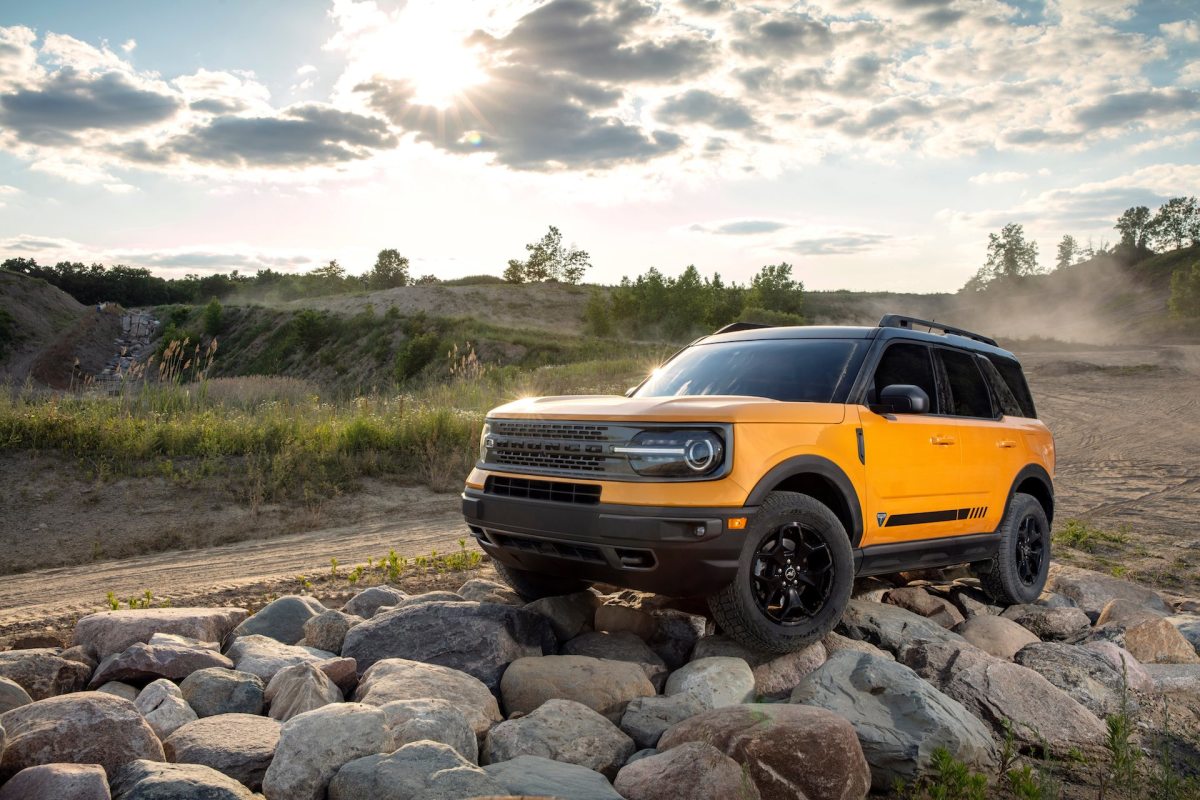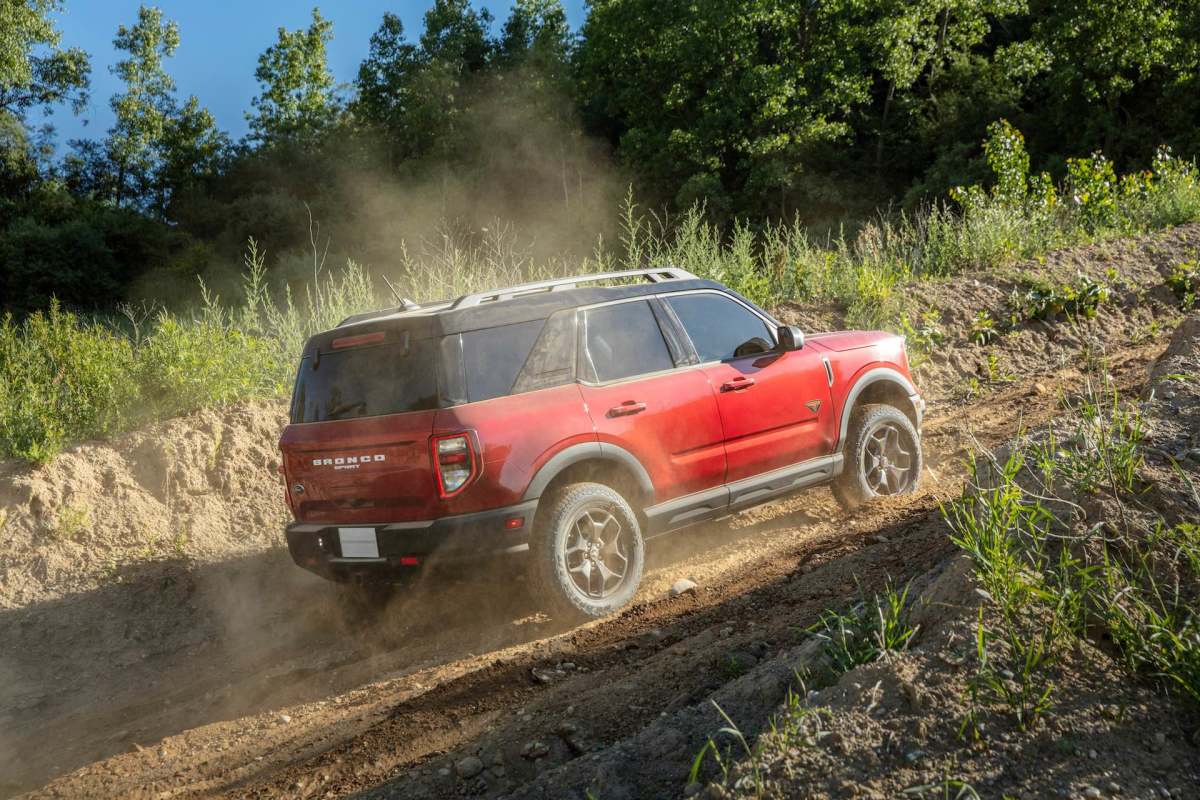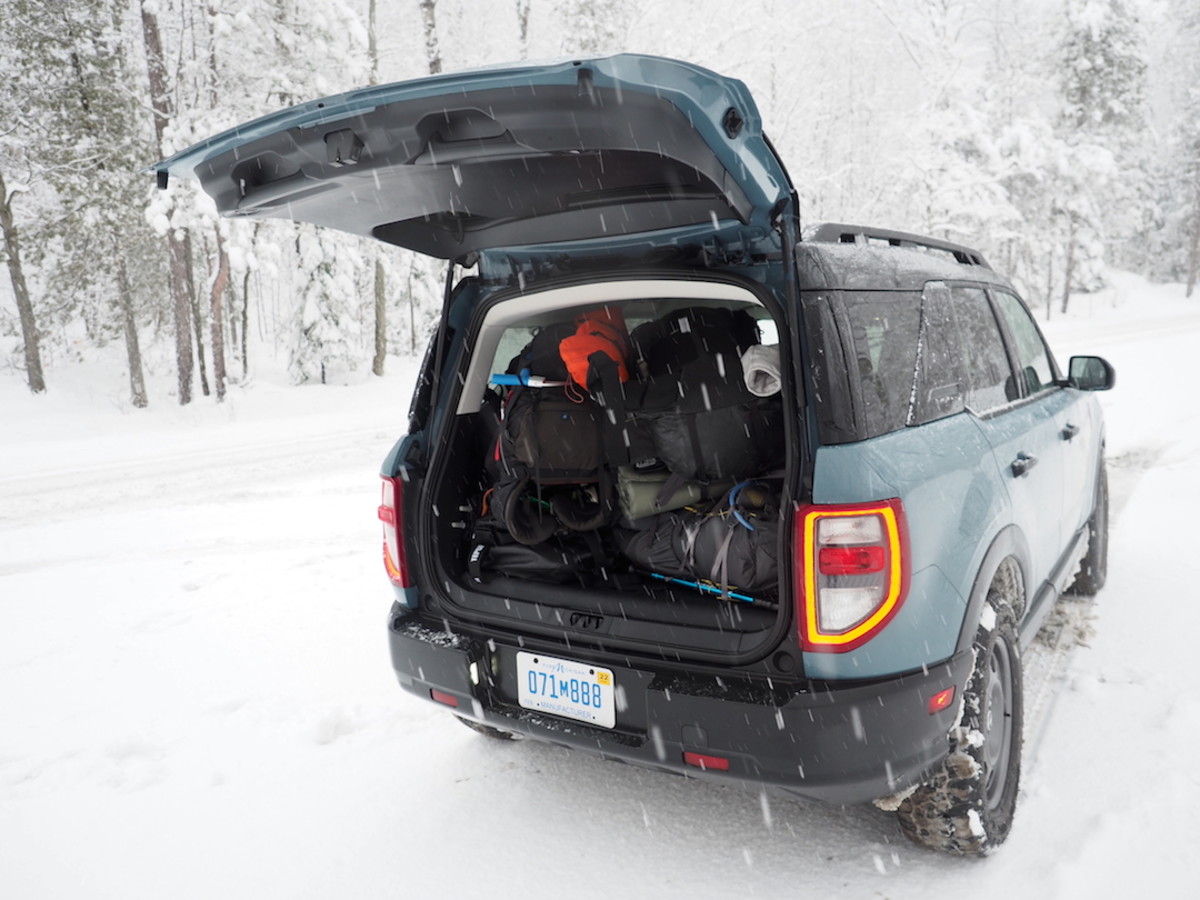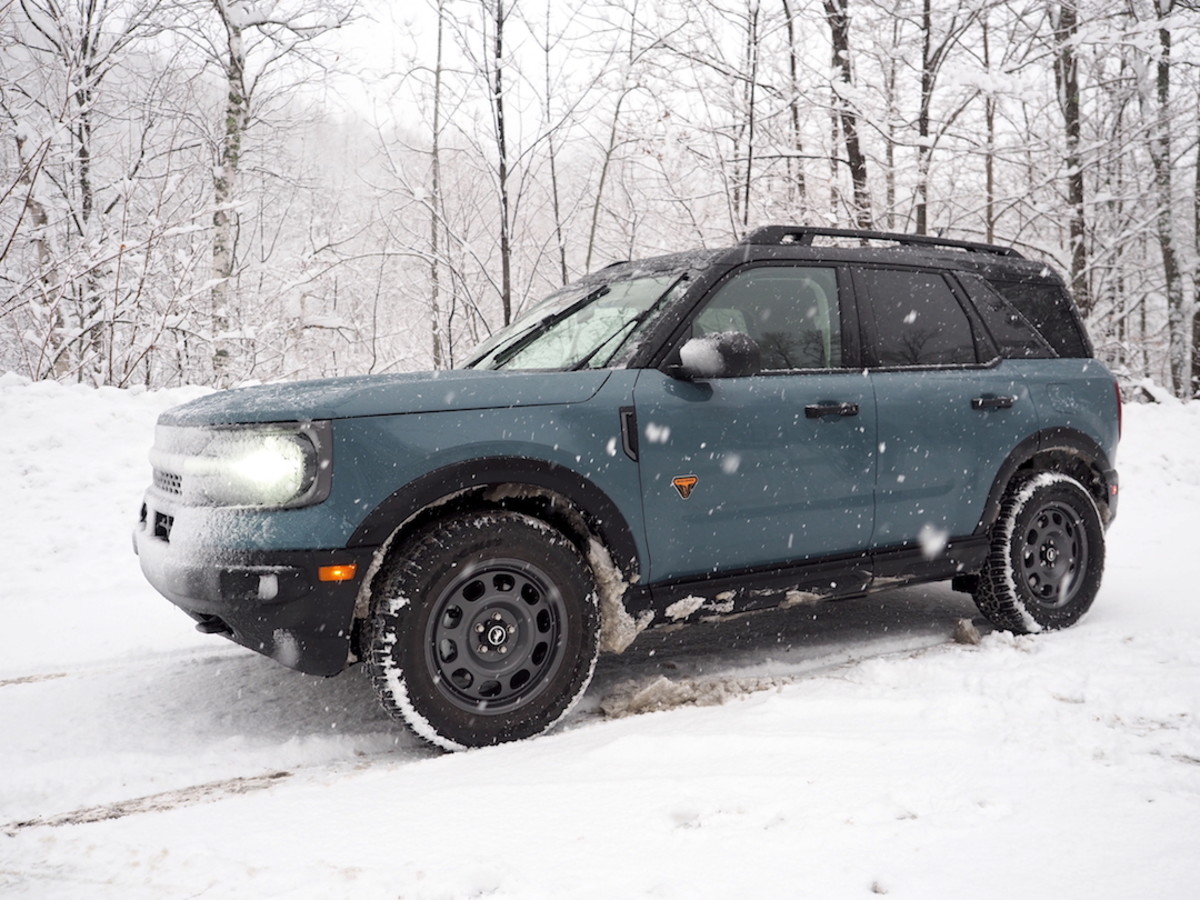[ad_1]
After she swiped my credit card, the cashier at the diner asked, “Is that your Bronco out there in the parking lot?”
After I explained I was test-driving it, she told me about the two Broncos she’d previously owned (her ex-husband mistreated them both), and how badly she wanted the 2021 model (very, very badly).
She’s not alone. The Bronco’s original run spanned the years between 1966 and 1996, and after Ford announced the brand’s return in 2017, Bronco fever set in. The auction house Barrett-Jackson reported that over the next three years, the average sale price on old models jumped by 88 percent. One restored ’76 edition brought in $195,000.
Last year, Ford finally announced details on the new lineup, and three months later, more than 190,000 people had already spent $100 to reserve their spot in line to buy one. It’d be accurate to say that anticipation has been running high.
So what does the new lineup look like? The most iconic models are the two- and four-door SUVs, complete with a removable top and spare tire mounted on the tailgate. But the model that will likely sell the most is option number three: The smaller, zippier Bronco Sport. That’s the one that has the diner cashier ogling, the one I’m test driving.
Unlike the two true SUVs, the Bronco Sport falls into the crossover category alongside the Toyota RAV4 or the Honda CR-V. It’s essentially an SUV-shaped wagon built on the frame of a sedan, and it shares DNA with the more suburban-focused Ford Escape. The big difference is that it comes with power and flourishing that appeal to the growing base of customers who spend their free time camping, climbing, and kayaking.

The Sport makes good businesses sense: It’s the most practical off-road entry point for most car buyers. As a category, crossovers account for about 40 percent of new auto sales. While SUVs are nice to look at—and they’re great if you do heavy towing—their smaller cousins cost less and offer better fuel economy, so you don’t pay extra for power you don’t need.
While Ford has yet to release the full-size Bronco SUVs (COVID allegedly delayed production), the Sport is out now. It became available in the fourth quarter of last year, and a few months later, Ford announced it had sold 5,120 units. Those that make it to dealership lots sit for an average of just six days before someone drives them home.
For my test drive, I planned what felt like a likely use-case for people who buy the Bronco Sport: A long weekend in nature. Two friends and I met up on a Saturday at 5:30 a.m. in New York City. We loaded the cargo hold with camping gear and set off for a 4.5-hour drive into the Adirondack mountains. We’d go from city to highway to snow, spend two nights in our tents, and then drive back to civilization.

The Bronco Sport comes in five trim models, and I was driving Badlands ($32,820). It’s geared toward off-road use with a 2.0-liter turbocharged engine (compared to 1.5 liters on the base model), 28.5-inch all-terrain tires, and a beefed-up suspension system.
As my crew and I loaded up in the predawn darkness, I appreciated that Ford thought to stick a floodlight in the cargo area. The visibility made our complicated loading project easier, and ultimately it got us on the road quicker. I also admired the Bronco’s sturdy rubber flooring, which runs throughout the entire cabin. It proved more than capable of deflecting barbs from snowshoes and hiking poles.

After loading three packs ranging from 55 to 85 liters, plus a couple extra bags of emergency gear, we set off to beat the morning traffic. From inside the cabin, the Sport runs as quiet as any new crossover, but as I toggled among the seven drive modes, I found more oomph than I’d expect. There’s a whole lot of power there—especially in Sport mode. (The other modes are Normal, Eco, Slippery, and Sand. Mud/Ruts and Rock Crawl modes are available only in Badlands and First Edition trims.)
On the highway, I set the adaptive cruise control to handle acceleration and braking. The feature is sophisticated enough to bring the vehicle to a complete stop, if necessary, and it freed up some brains pace so I could talk through critical trail and camp plans during the drive.
The Badlands edition comes with a suite of off-road perks that I was unable to test. It’s designed to wade through 23.6 inches of water, for instance. And the Trail Control feature works like a low-speed cruise control, working gas and accelerator for ideal traction over rugged, tricky terrain. Car campers will appreciate the two standard 110-volt outlets—one behind the front seats and one in the cargo area—along with dozens of Ford-approved accessories and carriers for kayaks, snowboards, bikes, and more.
The feature that proved most germane to my trip was slip control. With about an hour left to the trailhead, we ran into snowfall, and shortly after, we began seeing the usual casualties of icy roads—cars in ditches, surrounded by road flares, tow trucks, and state troopers.

A few of the moving vehicles flipped on their hazard lights and slowed to a crawling pace. And while I certainly dropped my speed, I kept cruising confidently in the Sport’s Slippery drive mode, which moderates sudden changes in tire speed from rapid acceleration or potentially jarring gear changes.
I tested the system at low speed by pumping the gas a little too hard and cutting the wheel. The traction didn’t budge. The Bronco’s brain effectively smoothed out my driving and kept me rooted on the road.
I’ll spare the details of the camping trip, but after miles of snowshoeing and two exhausting nights sleeping in the snow, it was nice to return to a vehicle that didn’t make me feel guilty about filling it with ice-crusted gear. In addition to the rubber flooring, the Bronco’s non-absorbent upholstery wipes down easily.

I started the car with the keyless ignition and settled my tired body into the heated seat. Then I made my way to the diner, where I met the cashier who was more interested in my Bronco than my two nights in the snow.
After breakfast, my crew and I set out to return to our homes. The drive back—quiet, smooth, and partially piloted by automatic features—illuminated the Sport’s most salient attribute: It’s equally comfortable in the city as it is in the wild. And that’s perfect for those of us who like going back and forth.
For access to exclusive gear videos, celebrity interviews, and more, subscribe on YouTube!
[ad_2]